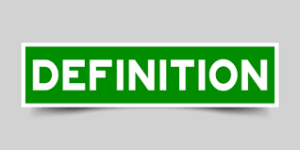A mixed market economy, also known as a hybrid economy, is an economic system that combines elements of both a free market and a command economy.
It is a system in which some economic decisions are left to the private sector, while other decisions are made by the government. In this blog post, we will discuss what a mixed market economy is, the different types of mixed economies, and the advantages and disadvantages of this type of economy.
We will answer the question: What is a mixed market economy? Have you ever wondered what is a mixed market economy? A mixed market economy is an economic system that combines elements of both the free market and command economies.
This type of system allows for both private ownership of goods and services and government intervention in the form of regulations, taxation, and subsidies.
In this blog post, we’ll explore the concept of a mixed market economy and its implications for businesses, consumers, and the overall economy. What is a mixed market economy?
This is a question that many people have when it comes to understanding the different types of economic systems. A mixed market economy is a system that combines elements of both a market economy and a command economy.
It combines the advantages of both economic models to create an economy that is able to function more efficiently and provide more economic opportunities for its citizens. In this blog post, we will look at the key components of a mixed market economy and how it works in practice.
Definition of a mixed market economy

A mixed market economy is an economic system that combines elements of a free market economy with elements of a command or planned economy. It is a hybrid of capitalism and socialism, combining the best of both systems.
The definition of a mixed market economy implies that it can use the most efficient methods of production to produce goods and services that people demand.
This means it can have a mix of private and public enterprises, which compete for consumer choice and allocate resources on the basis of prices determined in the market.
The government also has an active role in a mixed market economy, though it is not as extensive as in a command economy. Governments in mixed market economies are generally responsible for providing essential public goods, such as infrastructure, education, healthcare, and environmental protection. Governments also may provide regulation and oversight to prevent price fixing and monopolies.
Mixed market economies exist in many parts of the world, including most western industrialized countries. In the United States, for example, the government provides certain services while businesses and individuals compete in the private sector.
This combination of public and private enterprise allows citizens to enjoy both the freedom of choice associated with capitalism and the social benefits associated with socialism.
Characteristics of a mixed market economy

A mixed market economy combines elements of both a market economy and a planned economy. It allows both the government and private businesses to participate in decision-making, leading to a system where both public and private sectors work together. The following are some characteristics of a mixed market economy:
A mixture between an interventionist state and laissez faire approach
Government policies aim for economic stability by controlling interest rates, creating an employment equilibrium (the unemployment rate), or stimulating growth with tax cuts.
In order for the whole process to be effective and for it not to turn into capitalism or socialism at any point in time, it needs to maintain a balance between these two extremes by balancing markets with planned economic measures , or what is known as The Golden Mean.
Characteristics of a mixed market economy can also be seen when looking at the relation between national planning and international trade. Both sides have different roles; while international trade relies on free trade agreements and domestic regulation determines tariffs on imports, national planning regulates exports, consumption and other issues that have an impact on long-term economic performance.
Pros and cons of a mixed market economy

A mixed market economy combines elements of both capitalism and socialism, allowing for private ownership of some industries while also providing government regulation. This economic system has its advantages and drawbacks.
Here are the pros and cons of a mixed market economy. Pros of a mixed market economy include increased economic stability, an even distribution of wealth, and the possibility of entrepreneurial success.
The government regulation component also provides consumer protection, prevents monopolies, and reduces the risk of economic downturns.
However, the cons of this system include the potential for high taxes, government overreach, and inefficiency due to bureaucracy. Additionally, the government’s control of industries can lead to unfair practices, which can create an uneven playing field for businesses. It’s important to weigh both the pros and cons of a mixed market economy when deciding which economic system is best for you.
If you’re considering applying for student loans or other financing, consider your financial goals and how they align with the pros and cons of a mixed market economy.
Comparison to other economic systems
A mixed market economy is a type of economic system that combines elements of both a free market and a planned economy.
It typically contains a mix of private and public ownership, as well as regulations and restrictions imposed by the government to ensure that the market is fair and equitable. In comparison to other economic systems, the mixed market economy allows for greater flexibility, allowing businesses to adjust their practices to changing market conditions.
Unlike pure free market economies, which rely solely on supply and demand to determine prices, a mixed market economy allows for the government to intervene in order to prevent excessive price volatility.
The government may also use tax incentives or subsidies to encourage businesses to invest in areas of the economy that are deemed beneficial for society as a whole.
In comparison to a planned economy, the mixed market system gives businesses more control over their operations. Companies are allowed to make decisions based on their own internal criteria rather than having to abide by government edicts.
This system also allows for more competition, leading to higher quality products and services at lower prices.
Overall, a mixed market economy offers the advantages of both the free market and the planned economy while avoiding some of their respective disadvantages.
It provides more opportunities for businesses to grow and innovate while also allowing the government to intervene when necessary in order to protect the rights of consumers and promote a fair and balanced market.
Curious about how mixed market economies work? Check out this helpful video as it explain how mixed markets combine free choice with some government involvement.
You’ll see how this affects businesses, people, and the economy’s health. Whether you’re new to economics or want a clearer view of mixed markets, this video’s got you covered. It simplifies things, making it easy to understand how mixed market economies tick.
Conclusion
In conclusion, a mixed market economy is an economic system that combines elements of both free market and command economies. It allows for the free exchange of goods and services, while also allowing the government to intervene in certain areas such as setting prices and protecting consumer rights.
A mixed market economy helps to keep markets balanced and efficient, while also providing stability and order. Overall, it is a great way to promote economic growth while ensuring fairness and justice.
